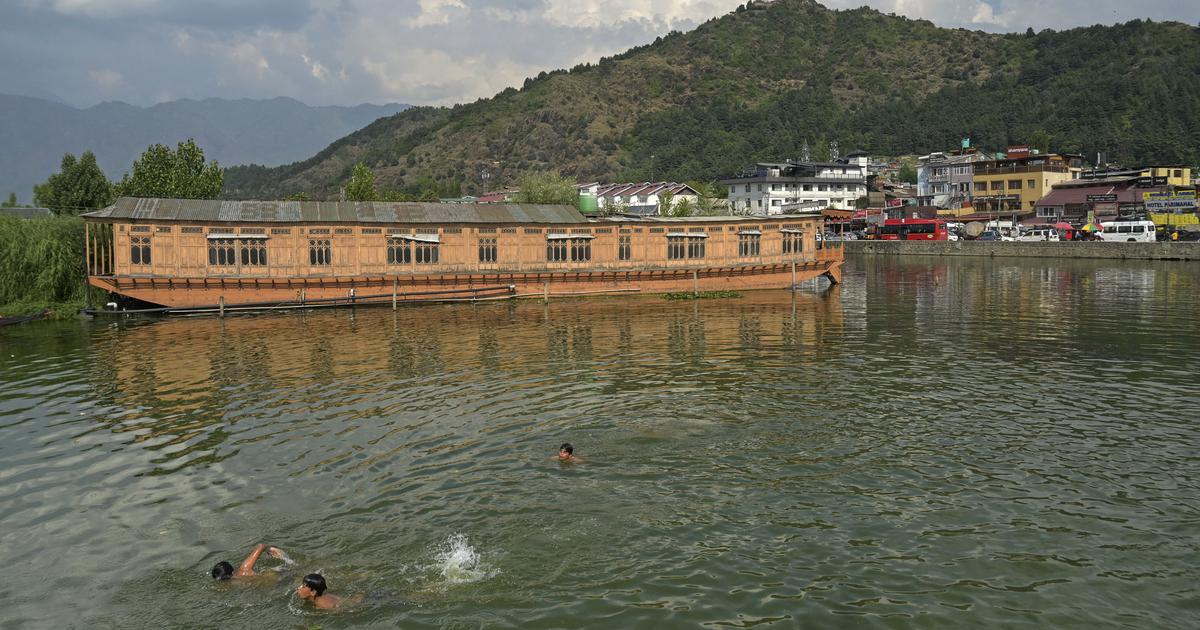Kashmir Faces Rising Summer Temperatures, Impacting Local Communities

An intense heatwave has taken a severe toll on the Kashmir region, with temperatures reaching record highs and causing significant distress among local farmers. In Pulwama district, farmer Zaina Begum has watched her paddy crops wither under the relentless sun, waiting in vain for rain that has become increasingly erratic. This summer has marked the hottest June in 50 years for the valley, prompting school closures and raising concerns about the long-term impacts of climate change on agriculture and water security in the area.
Record-Breaking Temperatures and Their Impact
Kashmir has recently experienced its highest daytime temperature in 70 years, soaring to 37.4°C (99.32°F), which is at least 7°C above the seasonal average. This unprecedented heat has led to the valley’s hottest June in half a century, forcing authorities to shut down schools and colleges for two weeks. While some areas received rainfall earlier this week, experts warn that the relief is likely to be short-lived, with predictions of even higher temperatures in the days to come. The changing climate has severely affected local farmers, who depend on consistent weather patterns for their livelihoods. Many are struggling to maintain their crops, and the quality of produce has declined, resulting in substantial financial losses.
Zaina Begum, who has cultivated paddy on her family’s one-acre land in Chersoo village for decades, expressed her despair. She noted that her family has not had a single healthy harvest in the last five years due to increasingly erratic rainfall. “This summer, it feels like our worst fears have come true,” she lamented, highlighting the dire situation faced by many farmers in the region.
Effects on Agriculture and Water Supply
The ongoing heatwave has not only impacted crops but has also caused major rivers and streams to dry up, according to Mukhtar Ahmad, head of the Indian weather department’s center in Srinagar. The signs of agricultural distress are evident across the region. In Bandipore district, for instance, Ali Mohammad’s 15-acre apple orchard, which he transitioned to from paddy cultivation two decades ago, is now suffering due to the lack of water. He explained that his orchards require watering at least three times a month, but the irrigation canals have dried up for the past two months.
The extreme weather conditions have also affected the health of residents. Parveez Ahmad, a 63-year-old local, experienced severe breathlessness attributed to the heat and humidity, leading to a hospital visit. Environmentalists attribute these changes to climate change, which has led to extreme weather events and prolonged dry spells in both winter and summer. Last year, the region experienced an unusual lack of snowfall, leaving the mountains brown and barren for months.
Long-Term Climate Trends and Their Consequences
A 2021 study indicated that the maximum temperature in Kashmir has risen by 2°C between 1980 and 2020, reflecting an average increase of 0.5°C per decade. Glaciologist Mohammad Farooq Azam noted that warmer winters have resulted in reduced snowfall, while hotter summers accelerate glacier melting. This disruption threatens water availability, human health, and agricultural productivity. Azam explained that the region’s winter precipitation, primarily from western disturbances, has become less frequent and weaker, leading to diminished snowfall and delayed snowmelt.
The consequences of these climatic shifts are profound. As glaciers shrink and snow cover decreases, the land absorbs more heat, exacerbating the warming trend. Jasia Bashir, a professor at the Islamic University of Science and Technology, emphasized that despite contributing minimally to global carbon emissions, Kashmir is severely affected by climate change, making it a victim of a crisis it has played little part in creating.
Urbanization and Environmental Challenges
Rapid urbanization in Kashmir has further complicated the situation. Vast farmlands and forests have been replaced by concrete structures, diminishing the region’s natural ability to regulate its climate. A report from Global Forest Watch revealed that Jammu and Kashmir lost nearly 0.39% of its total tree cover between 2001 and 2023 due to deforestation and forest fires. Additionally, government data indicates that over 600,000 trees have been felled in the last five years due to river encroachments.
As urban areas experience increased energy demands, particularly for air conditioning, greenhouse gas emissions have risen. This creates a vicious cycle where rising temperatures lead to greater energy consumption, further fueling emissions and contributing to additional warming. Critics argue that environmental issues are often overlooked by local politicians, despite the growing risks. However, Tanvir Sadiq, a spokesperson for the region’s government, stated that the administration is taking climate change seriously and exploring options to mitigate its impact.
For farmers like Zaina Begum, urgent action is necessary to address the challenges posed by climate change. “Otherwise, we will be doomed,” she warned, highlighting the pressing need for effective solutions to safeguard the livelihoods of those dependent on agriculture in Kashmir.
Observer Voice is the one stop site for National, International news, Sports, Editor’s Choice, Art/culture contents, Quotes and much more. We also cover historical contents. Historical contents includes World History, Indian History, and what happened today. The website also covers Entertainment across the India and World.

